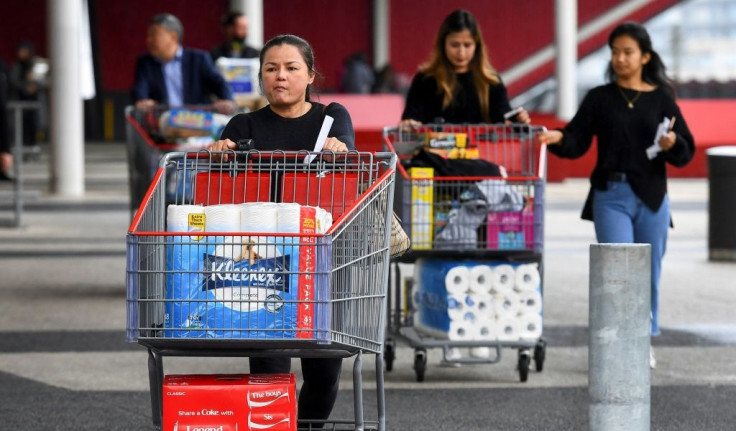Most COVID-19 Infections Spread By Air, Not Surfaces

Maybe you come home and leave your shoes outside. You disinfect your packages, wipe down your groceries, throw your clothes in the wash, and disinfect every surface you have touched, like the door handle, countertops and cabinets. Finally, you wash or sanitize your hands.
Welcome to life in the global pandemic, thanks to SARS-CoV-2 , the virus responsible for COVID-19.
What experts thought at first
In the beginning of the pandemic, experts thought COVID-19 was spread across surfaces. In other words, touching something that had droplets of the respiratory virus on it and then touching your face could give you the virus. This called for a newfound need for cleanliness and disinfecting.
But, as we grew more familiar with the virus over time, research showed little evidence the virus was spread across surfaces, but rather by respiratory transmission.
Scientists at Montefiore Medical Center in New York City, Hospital of the University of Pennsylvania in Philadelphia, and Massachusetts General Hospital, Harvard Medical School and Brigham and Women's Hospital in Boston, all looked at scientific articles published since the start of the pandemic in January 2020. They also examined governmental reports to see how the virus spreads.
What they know now
They found only several experimental studies that showed the virus lived on surfaces for hours. Instead, real world studies confirmed that respiratory transmission was the main transmission method. That’s being sneezed, coughed or breathed on by someone who has the virus.
Even when researchers thought the virus spread from surface contact, they could not rule out respiratory transmission. “As far as I know, there has not been a documented case of a COVID infection just from touching a surface, though I think it would also be hard to document such a case,” Leann Poston, MD, said in an interview with Medical Daily . Dr. Poston is acting assistant dean and director of admissions at Wright State University’s Boonshoft School of Medicine in Ohio.
“Viruses can be spread by fomites or objects, but it is much harder. Someone would need to cough or sneeze on the object, and then another person would need to touch the infected surface and then touch their eyes and nose. Not a likely scenario, especially now, with the precautions most take to stem the spread,” Dr. Poston said.
Researchers also found that proximity and ventilation were key to the risk of transmission. The COVID-19 virus peaks about a day before the onset of symptoms and declines within a week of symptom onset.
Should we stop disinfecting surfaces?
So, was all the cleaning and disinfecting necessary? “In my opinion, the short answer is yes,” Pooneh Ramezani, DDS, co-founder of Dr. Brite, a line of essential cleaning products, including sanitizers, told Medical Daily. “Specifically, early on when the mode of transmission was unknown, people were getting infected, and vulnerable people were dying.”
Now that we know the main transmission of the virus is via respiratory droplets, we realize it is unlikely for someone to get COVID-19 from surface transmission. “You don't need to go to the extreme of wiping every packaged food product from the store as soon as you get home or washing your clothes in hot water . . . unless you are a first responder, doctor or nurse, with direct contact with COVID-19 patients,” Dr. Ramezani added.
Instead, she said, just do the necessary cleaning to keep your loved ones safe. If you have crawling toddlers, for instance, or kids who touch and mouth every surface, make your home a shoe-free zone by taking off your shoes in a designated area or keeping them outside.
You might also wipe down frequently touched surfaces like doorknobs and kitchen counters, as you did pre-pandemic. Most important, protect yourself and your loved ones by keeping a social distance of at least six feet in public and wearing masks when you can’t distance yourself.
Jennifer Nelson is a health writer based in Florida who also writes about health and wellness for AARP, PBS’ Next Avenue, Shondaland, and others.
Published by Medicaldaily.com



























